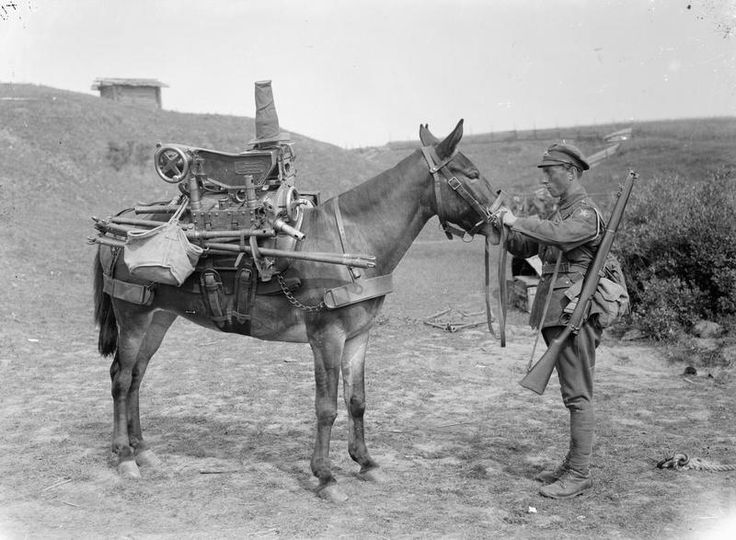Have you ever been told that you are as “stubborn as a mule”?
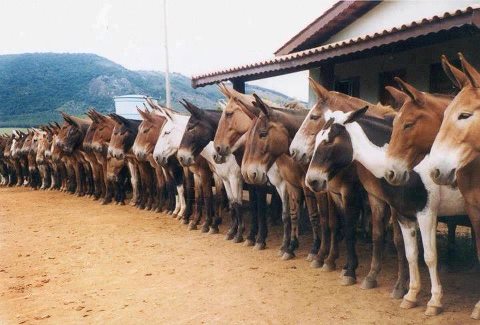
If so, then consider it a compliment. Why you may ask? Because mules are “stubborn” when they perceive danger and simply refuse to proceed any further, no matter what any human tells them to do. Which simply means they are very intelligent!
So, we have horses for riding and pulling. We have donkeys for packing and guarding. We have oxen for pulling, too. Why do we need mules? I’ll be happy to explain.
Now mules didn’t just appear on their own. The mule (usually sterile) has been deliberately bred by man since ancient times. The breeding of a jackass (a male donkey) with a female horse (a mare) is the most common and oldest known hybrid. A somewhat less common hybrid, the Hinny, was bred by crossing a female donkey with a male horse. But to what purpose?
The simple fact is that the mule is sturdier, more sure-footed and can endure more than the average horse. The history of the Western Expansion shows these many facts:
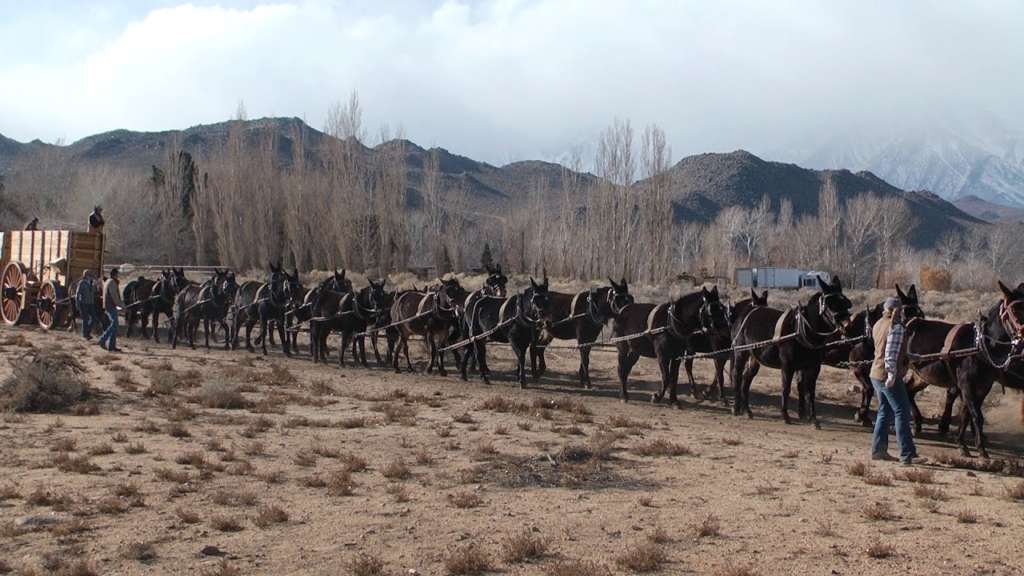
New Borax Mule Team
In wagon trains, mules could cover 30 miles a day where horses and oxen could cover only 5. Many stage lines preferred mules to pull their top-of-the-line Concord Coach. In most mining towns, firefighters preferred using mules to pull their firefighting equipment. During the discovery of gold in California, pack trains in 1852 equaled 16,000 mules and by 1855 the number had grown to 31,000! A “Pack Mule Express” carried special delivery mail to mining communities and delivered gold to banks. On farms and ranches, such as here in Carson Valley, mules were essential to their success as they were greatly used in the fields and all aspects of operations.
By the 1880s, Borax had been discovered in Death Valley, CA. William Tell Coleman’s company used the famous 20 Mule Team to haul the Borax to the nearest rail station at Mojave, CA. On these 20-day round trips over waterless terrain in extremely high temperatures, they never lost a single mule!
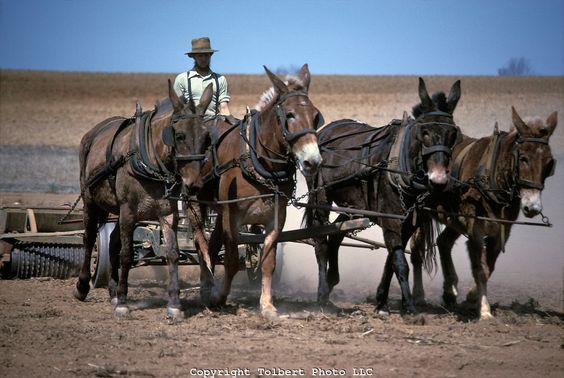
Mules in ranching.
Mules were essential to most mining operations. In Virginia City, NV mules mostly handled the movement of the freight to and from the Comstock. In some mines, however, mules were used for hauling ore carts underground and were thus stabled there, never to see the light of day again.
During the Civil War, the Union Army used over one million mules to transport artillery and supplies. When President Lincoln would visit these troupes, he was said to be primarily concerned with the comfort of the mules over the officers.
And in the beginning of the 20th Century, mules were greatly used to help build roads, railways and telegraph lines, as well as in the building of dams and canals.
Then, of course, there was the packing business and the three main types of government projects that packers supported in the early 1900s were fire suppression, trail construction and maintenance and bridge construction.
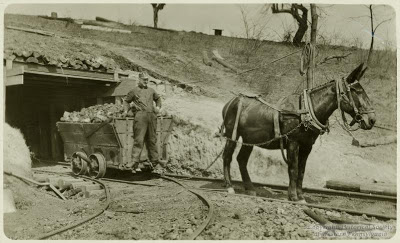
Mules in mining.
This work was a result of the creation of 3 new national parks in the Sierra Nevada.
Today there are celebrations like Bishop Mule Days, and if you want to know more about mules, you can visit the Mule Museum.
In many ways, mules are woven into the fabric of Carson Valley history with wagon train settlers, agricultural operations, and the proximity to mining. With their long funny ears, their soulful eyes and their unique bray… how can you resist falling in love with the intelligent, surefooted and hearty Mule?
Story by Kim Harris, a local historian and historical re-enactor, who passionately shares her love of Carson Valley history at every opportunity afforded to her. Find out more at Western History ALIVE!



